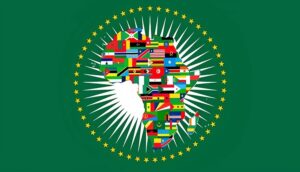The 15th BRICS Summit is officially underway, convening leaders from Brazil, Russia, India, China, and South Africa in a much-awaited meeting aimed at fortifying the trade alliance. While discussions at the highest levels are expected, this year’s summit takes on additional significance as more than 23 countries have expressed interest in joining the BRICS coalition.
Leaders Arrive in South Africa
Brazilian President Lula Da Silva and Chinese President Xi Jinping were among the early arrivals in South Africa, landing on Monday ahead of the three-day gathering. South African President Cyril Ramaphosa formally welcomed the leaders, setting the stage for consequential dialogues.
Indian Prime Minister Narendra Modi is en route, although the exact time of his arrival remains undisclosed. Several African leaders, including Malawian President Lazarus Chakwera and Cameroon Prime Minister Dr. Joseph Dion Ngut, have also arrived, as has United Nations Secretary-General António Guterres.
Virtual Participation and Security Measures
Notably absent in person will be Russian leader Vladimir Putin, who has opted for virtual participation. His opening remarks will be broadcast, underscoring Russia’s commitment to the summit even in his physical absence.
Security has been a focus, with South Africa’s Police Minister Bheki Cele confirming that extensive measures are in place. The priority is ensuring a safe environment for over 40 heads of state, multiple government representatives, and local and international dignitaries attending the event.
Emerging Economies and Monetary Policy
One issue casting a long shadow over the summit is the call for a single currency and a move away from dollar-based trade. This initiative aims to bolster emerging economies and ensure their competitive standing in global markets. South African Trade and Industry Minister Ebrahim Patel is slated to lead discussions at the BRICS Business Forum on the opening day.
Economic Impact and Future Prospects
The ANC, South Africa’s governing party, issued a statement highlighting the economic potential of the BRICS alliance. According to the party, China and India together accounted for 14% of total exports in 2022. The ANC also noted that India was one of the fastest-growing customers for South African exports last year, increasing by 20.2% from 2021.
The party sees the summit as an opportunity to redress trade deficits with BRICS nations through enhanced manufacturing and industrialization. This is expected to lead to increased exports of beneficiated products to BRICS countries. Moreover, the ANC anticipates that the summit will invigorate South Africa’s tourism sector and endorses the idea that the proposed expansion of the BRICS alliance would be advantageous to various sectors across the country.
Cooperation Beyond Trade
Beyond economics, the ANC also foresees the summit’s potential to expand working groups in sectors like mining, industrialization, infrastructure, health, and sustainable energy. These areas are viewed as crucial for achieving long-term sustainable development goals and present a significant opportunity for the BRICS nations to demonstrate their collective capacity for problem-solving and innovation.
The summit is not just a meeting of economies but an assembly of ideologies, visions, and future prospects. Its outcomes could influence a variety of sectors, from trade to tourism, and its deliberations may offer new pathways for countries interested in joining this influential bloc. With significant global attention, the summit provides a platform for the BRICS nations to articulate their roles in a rapidly changing world order.














